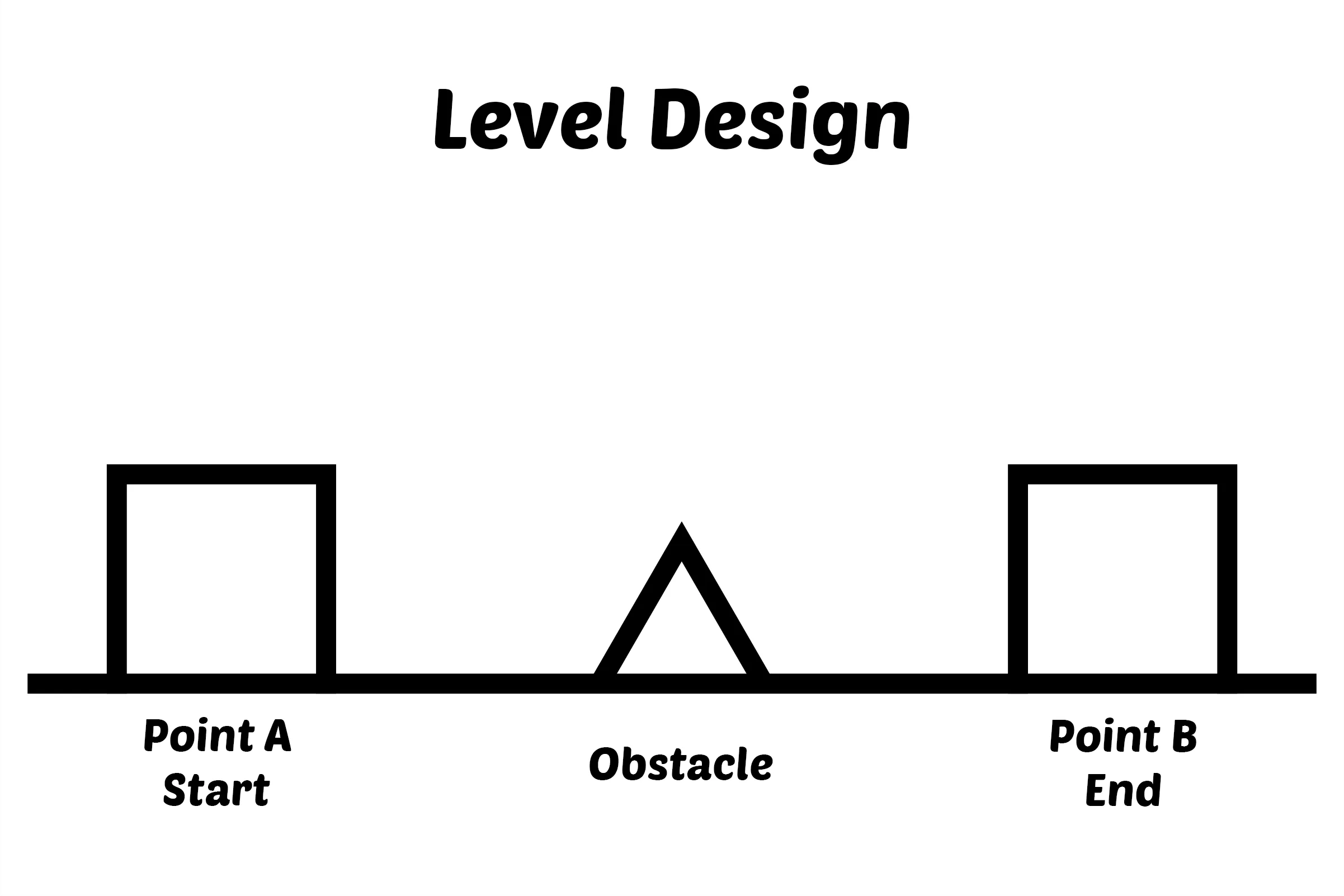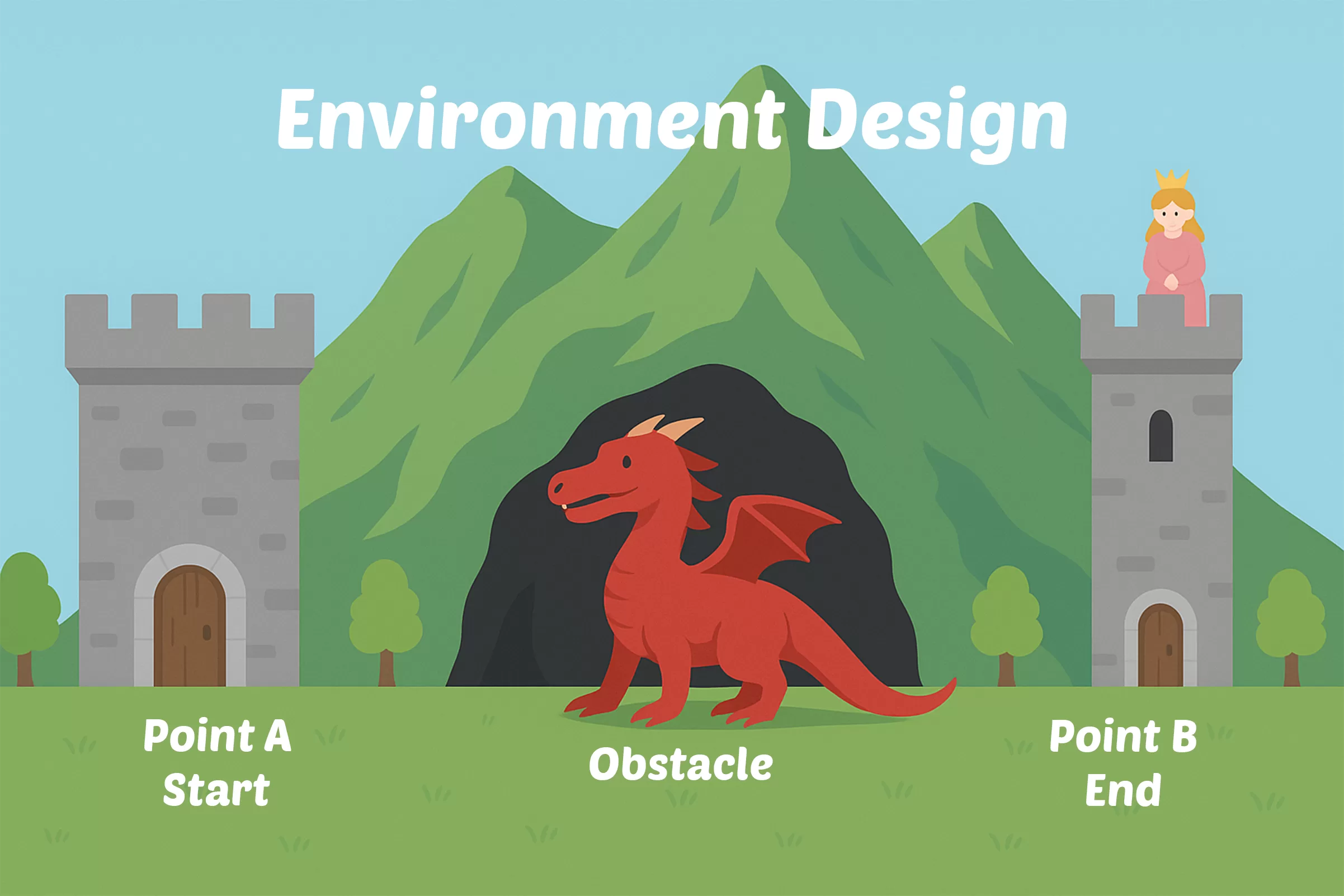Levels and Environments
Levels and environments are both important parts of how a game is designed and experienced. They often work together to create gameplay that feels exciting, challenging, or immersive.
-
A level is what the player must complete.
-
An environment is how that level looks, feels, and sounds.
What is a level?
A level is a part of the game that the player must finish before moving on. It usually involves a goal, such as:
-
Getting from Point A to Point B
-
Defeating a certain number of enemies
-
Solving a puzzle
-
Surviving for a set amount of time
Levels often contain obstacles or challenges that make reaching the goal more difficult. These can include:
-
Gaps to jump over
-
Enemies to defeat
-
Puzzles to solve
-
Locked doors or hidden switches
Each level is a mini-challenge that pushes the player to use what they’ve learned so far.
What is an environment?
An environment is the setting of the level. It includes how everything looks, sounds, and feels. This can affect the mood and tone of the game.
The environment includes:
-
Visual style (e.g. bright and colourful, dark and scary)
-
Backgrounds and scenery (e.g. forests, castles, cities, space)
-
Sound effects and music
-
Lighting and weather effects
Even if the goals in the level stay the same, a new environment can completely change how it feels to play.
Comparing Levels and Environments
Levels and Environments can be very similar, but it is important to know the difference.
In the demonstration, you can see that the level consists of three elements.
- Point A – where the level starts
- Obstacle – something the player must get past
- Point B – where the level ends
Meanwhile, the environment shows that there are castles, a mountain, a cave with a dragon.
The level is what the player must complete, the environment is how it looks and feels.


Level and Environment Design Help
Below is a collection of prompts to help you explore character design. Simply answer the questions that apply to your levels and environments.
View Level Design Help
Core Purpose
-
What is the player trying to do in each level?
-
Where do the levels begin and end?
-
What must the player complete to move on?
Obstacles and Challenges
-
What kinds of obstacles do the levels include?
-
Are there enemies, traps, puzzles, or hazards?
-
What makes each obstacle interesting or tricky?
Progression and Difficulty
-
How do the levels get harder as the game goes on?
-
Are new mechanics or enemies introduced in later levels?
-
What keeps the challenge fun without making it frustrating?
Structure and Layout
-
Are the levels linear (a straight path) or open (multiple paths)?
-
Can players find hidden areas or shortcuts?
-
Do any levels have alternate routes or secrets?
Special Features
-
Are there boss fights, timed sections, or unique gameplay moments?
-
Do any levels introduce something unexpected?
-
Is there anything in the levels that changes as you play?
View Environment Design Help
World and Setting
-
Where does the game take place?
-
Is it one world or multiple locations?
-
Be specific: Is it a haunted castle in the mountains, or a neon city in the clouds?
Visual Style
-
What does the world look like?
-
Is the art style realistic, cartoony, pixelated, or something else?
-
What colours, shapes, or details help bring the environment to life?
Mood and Atmosphere
-
How should the player feel in this world? (e.g. calm, nervous, excited)
-
What sounds, music, or lighting help create that mood?
-
Are there weather effects, shadows, or animations that add depth?
Gameplay Impact
-
Does the environment affect how the game plays? (e.g. ice makes you slip, fog hides enemies)
-
Are there moving parts in the world (e.g. lifts, falling rocks)?
-
Can players interact with objects in the environment?
